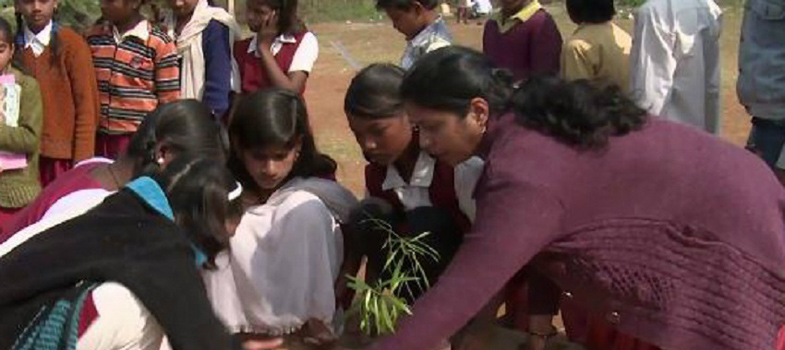1 A global vision for teaching and learning?
International and national policy documents each offer a vision for education in their context – they may vary in their emphasis, but there are common themes. A very large number promote the ‘learner-centred’ classroom as an ideal, and good teaching as teaching that leads to students learning for understanding, rather than just memorising information. In India, the National Curriculum Framework (2005) outlines educational policy direction in India as follows:
Our current concern in curriculum development and reform is to make it an inclusive and meaningful experience for children, along with the effort to move away from a textbook culture. This requires a fundamental change in how we think of learners and the process of learning. Hence the need to engage in detail with the underpinnings and implications of ‘child-centred’ education.
‘Child-centred’ pedagogy means giving primacy to children’s experiences, their voices, and their active participation. This kind of pedagogy requires us to plan learning in keeping with children’s psychological development and interests. The learning plans therefore must respond to physical, cultural and social preferences within the wide diversity of characteristics and need. […] We need to nurture and build on their active and creative capabilities – their inherent interest in making meaning, in relating to the world in ‘real’ ways through acting on it and creating, and in relating to other humans. Learning is active and social in its character […].
Children’s voices and experiences do not find expression in the classroom. Often the only voice heard is that of the teacher. When children speak, they are usually only answering the teacher’s questions or repeating the teacher’s words. They rarely do things, nor do they have opportunities to take initiative. The curriculum must enable children to find their voices, nurture their curiosity – to do things, to ask questions and to pursue investigations, sharing and integrating their experiences with school knowledge – rather than their ability to reproduce textual knowledge. Reorienting the curriculum to this end must be among our highest priorities, informing the preparation of teachers […]
If you are working in India and are not familiar with this policy, you should refer to Chapter 2 of the National Curriculum Framework [Tip: hold Ctrl and click a link to open it in a new tab. (Hide tip)] .
However, implementing these policy visions in classroom teaching is challenging. UNESCO’s Global Monitoring Report (2014) shows that not all children in school benefit from their education and many do not achieve the basic learning outcomes needed for work and a productive life. (Chapter 4 in the Education for All Global Monitoring Report 2013/4 gives further detail.)
In India, research on educational quality is conducted annually by ASER. Findings from the most recent report, while contested by some, suggest that a large percentage of students in Indian schools are not achieving basic skills in reading and mathematics. Factors such as poverty, gender, disability, ethnicity, language and geographical location all significantly affect how much students learn when they are in school classrooms.
Activity 1.2: Educational policy and your experience
- What are the key features of policy in terms of teaching and learning for basic education in your country or state?
- To what extent does policy resonate with your experience of teaching and learning in India or your country?
- What do you think is the biggest challenge to putting your country’s policy into practice?
Write a short note of your responses to these questions in your notebook.
Introduction
